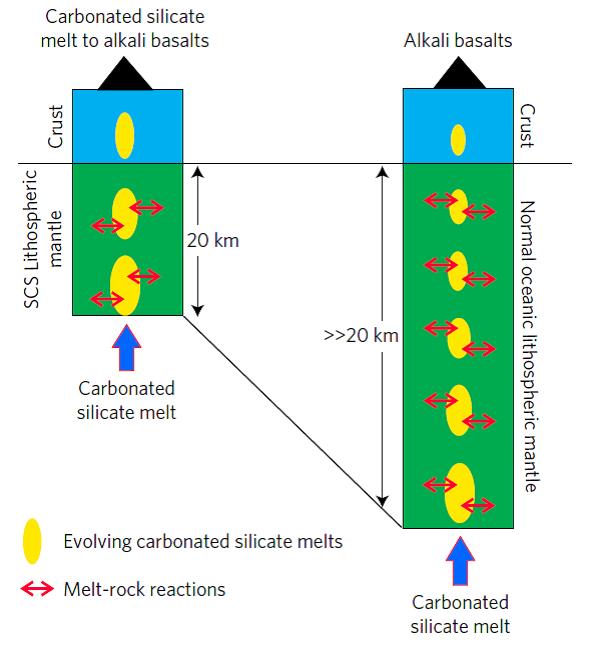A new paper named “Evolution of carbonated melt to alkali basalt in the South China Sea” was published in Nature Geoscience on 23th/Jan. This study was led by Guoliang Zhang of IOCAS under collaboration with Li-Hui Chen (Nanjing University), Matthew Jackson (University of California, Santa Barbara) and Albrecht W. Hofmann (Max-Planck-Institute, Germany), and has reported the first recovery of carbonated silicate melt that was only previously predicted in the high temperature and pressure experiments. More importantly, this study has found that the carbonated melt has evolved continuously to alkali basalt, which has implications on the role of CO2 in the origin of the global alkali basalt. The lithosphere thickness plays a crucial role in the transition of carbonated melt to alkali basalt.
The mantle is the largest reservoir for carbon, and the activity of CO2 during the mantle melting relates to the deep carbon cycle. The CO2-rich silicate melts have only been predicted by experimental studies, thus, the results of this new paper indicate a potentially important role in the global deep carbon cycle in the alkali basaltic magmatism.
The carbonated melt is one of the most rare earth element-rich magma. The transition from carbonated melt to alkali basalt allows deposit of rare earth elements in the shallow mantle, which implies for a potential deposit of rare earth elements under a seamount.
This study is financially funded by Strategic Priority Research Program of the Chinese Academy of Sciences and NSFC.
Link: http://www.nature.com/ngeo/journal/vaop/ncurrent/full/ngeo2877.html

Figure 1. Schematic evolution of carbonated silicate melts in the
lithosphere.

